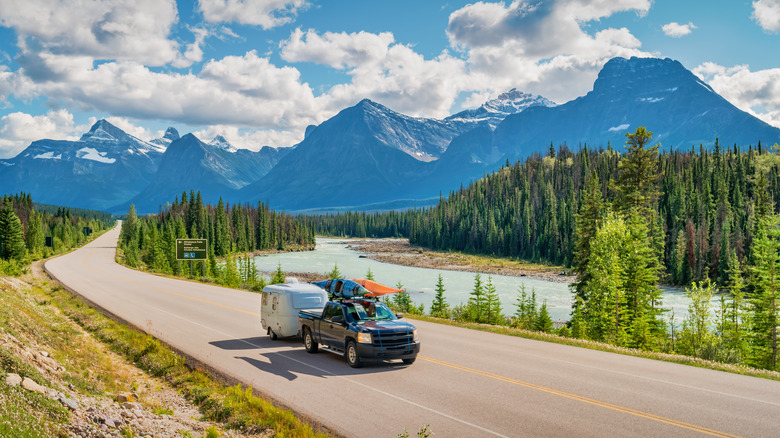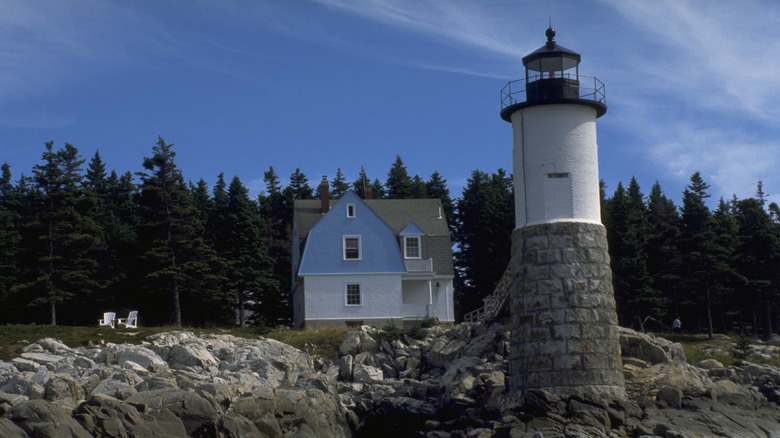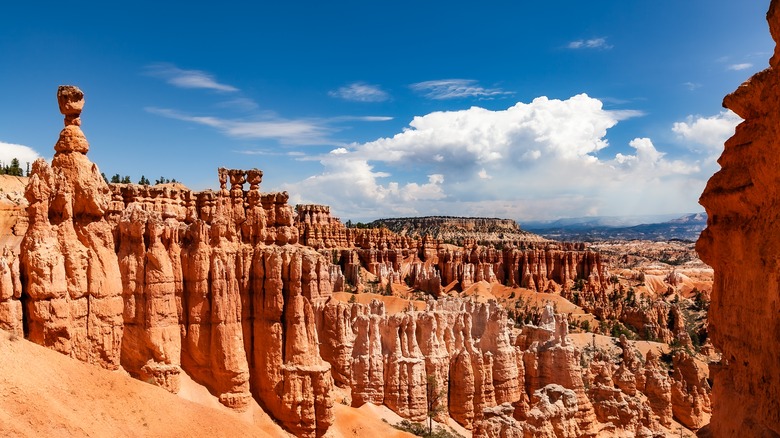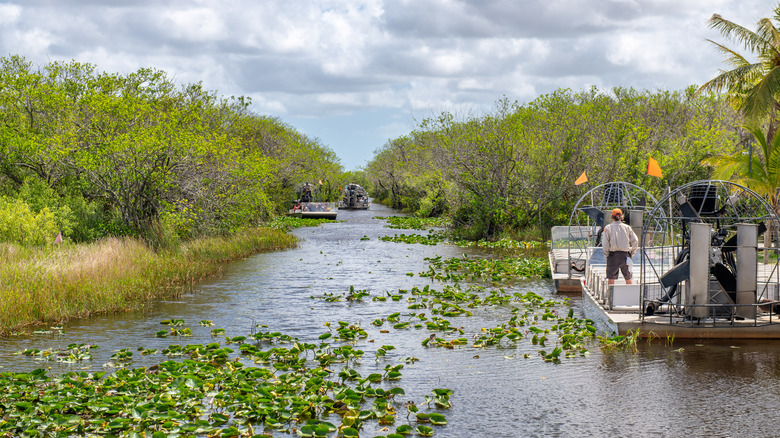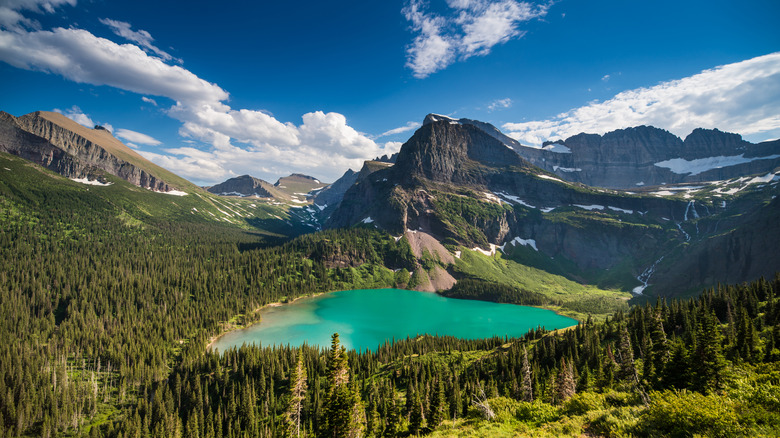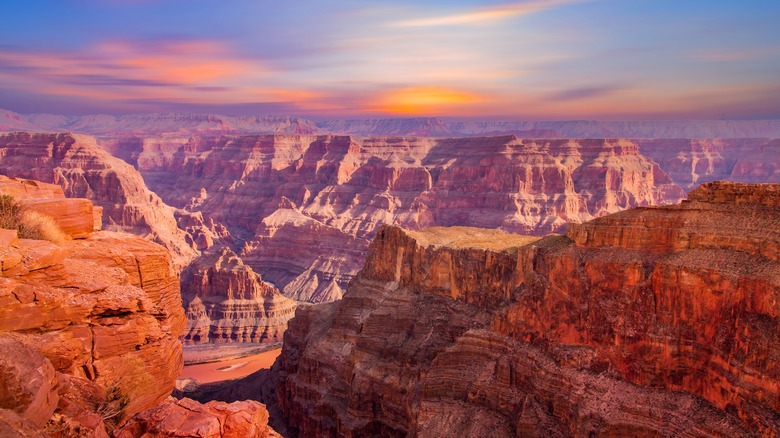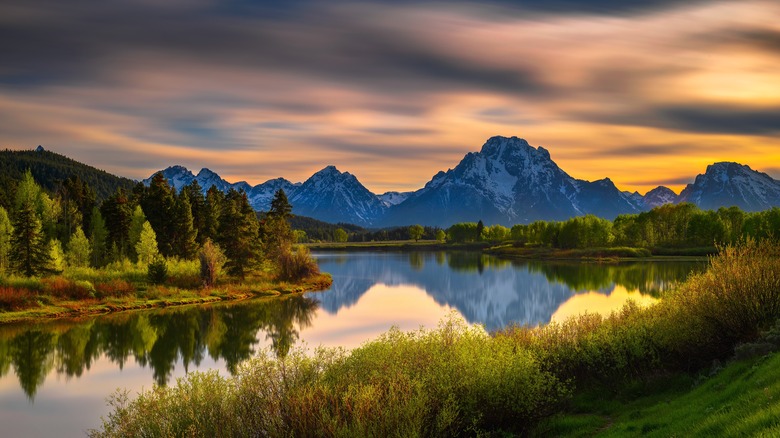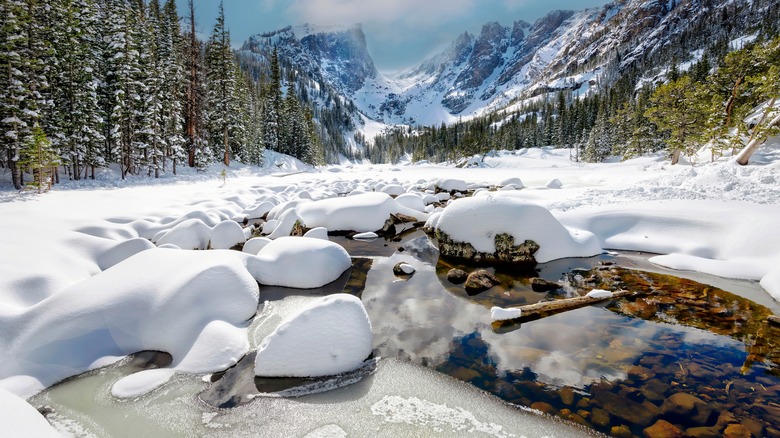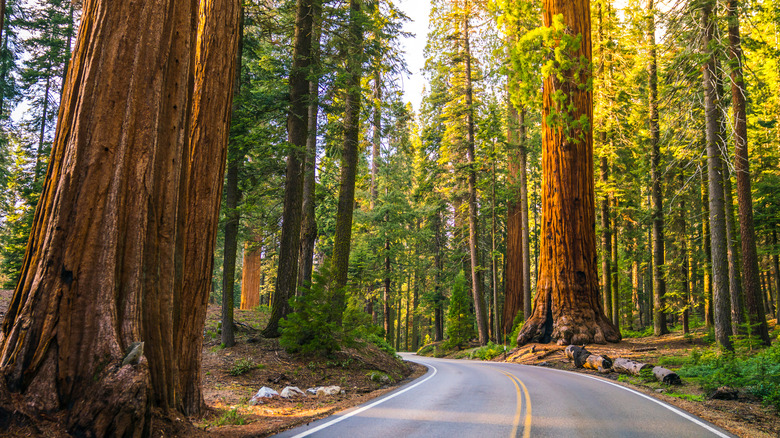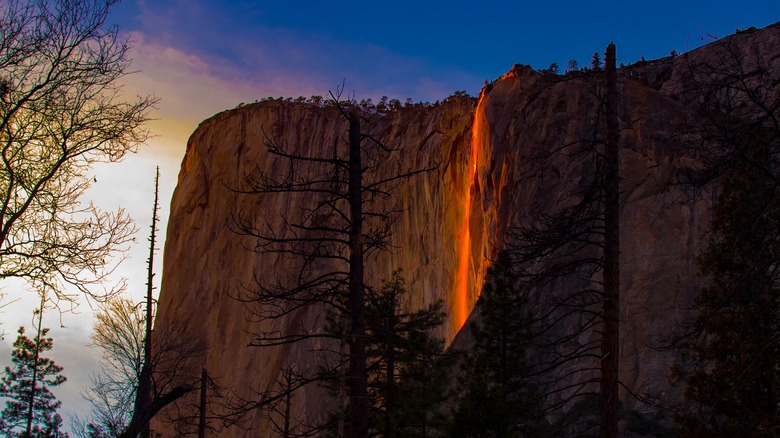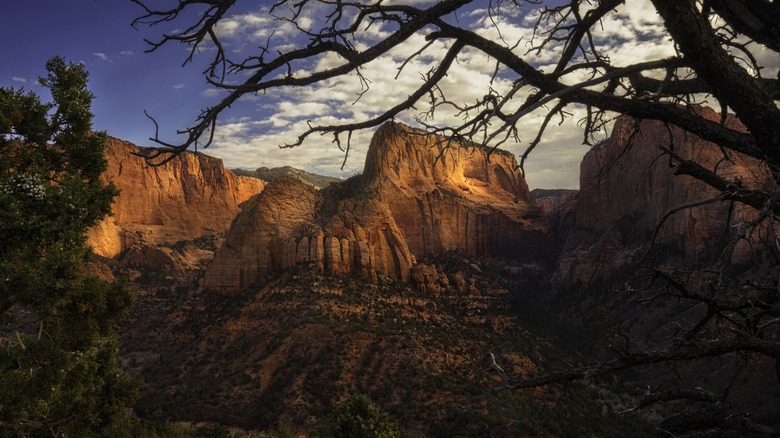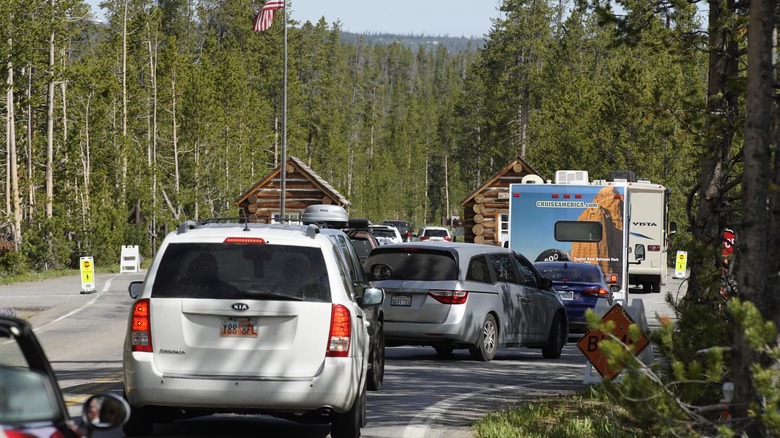11 Most Expensive National Parks
In the tapestry of America's protected wilderness, national parks stand as pillars of natural beauty and ecological significance. The United States boasts over 470 national parks and historical sites, according to the National Park Service (NPS), each with its own charm. However, amid their splendor is the reality that there is a cost to experience these pristine landscapes.
In the intricate web of America's national park system, the balance between preservation and accessibility is a delicate one. As stewards of these natural wonders, the NPS shoulders the responsibility of safeguarding these treasures for future generations while also ensuring that they remain accessible. Maintaining this equilibrium comes at a cost, one that has been rising incrementally with legislative and executive orders since 2018, according to the National Recreation & Park Association. In 2023 alone, contributions from visitor fees and donations ranged roughly $3.475 billion, though the agency estimated needing more than $21 billion for maintenance and repairs at the end of 2022.
From infrastructure maintenance to visitor services, the operational needs of national parks have evolved over time, contributing to a steady rise in entrance fees. National parks with the most expensive visiting fees are typically also the most popular. These national parks currently charge at least $70 for an annual park-specific pass, $35 per vehicle, $15-20 per person, and $30 per motorcycle. Though higher costs may seem burdensome, it's important to understand the underlying dynamics that drive the escalating costs of experiencing America's natural wonders.
Acadia National Park
Acadia National Park is situated primarily on Mount Desert Island, along the coast of Maine, and encompasses approximately 49,000 acres, making it relatively compact compared to some of the larger national parks in the U.S. The park is renowned for its diverse ecosystems throughout its breathtaking landscapes. Visitors to Acadia National Park have a wide range of activities to choose from, including hiking, wildlife viewing, and cycling. The miles of hiking trails can take travelers up glorious peaks such as Cadillac Mountain for amazing sunrise and sunset views, all the way to Acadia's Thunder Hole.
Acadia National Park attracts up to 4 million visitors annually, according to the NPS, making it one of the most popular national parks in the United States. In 2022, visiting fees provided $479 million to the local economy, which helped support nearly 6,700 jobs in the local area. With its high visitation rates and entrance fees, the park generates significant revenue each year, contributing to its status as one of the most expensive national parks in terms of visitor expenditures. Rates vary depending on the season and mode of entry.
To help mitigate costs, the Island Explorer Shuttle bus offers fare-free exploration in and around Acadia and runs from June to October. For this park and every other one on this list, certain groups such as military personnel, fourth-grade students (through the Every Kid Outdoors program), and individuals with disabilities may be eligible for reduced or waived entrance fees. If visiting multiple parks within a year, purchasing an America the Beautiful Pass may also help lower costs.
Bryce Canyon National Park
Nestled in the heart of southern Utah's red rock country, Bryce Canyon National Park stands as a testament to the awe-inspiring forces of nature. Spread across over 35,000 acres, the park is renowned for its intricate maze of hoodoos — tall, thin spires of rock that protrude from the canyon floor, creating a surreal and mesmerizing panorama. Despite its relatively modest size, Bryce Canyon has been one of the most sought-after destinations for just over 100 years. Bryce Canyon National Park attracts over 2 million visitors annually, according to NPS. With its high visitation rates and entrance fees, the park generates significant revenue each year, contributing to its status as one of the most expensive national parks in terms of visitor expenditures.
Those visiting Bryce Canyon National Park are treated to a wealth of outdoor experiences. Regarded as a Dark Sky Park, Bryce Canyon offers unparalleled opportunities for stargazing, with clear, unpolluted skies providing unobstructed views. The park also offers a network of trails catering to hikers of all skill levels, allowing adventurers to explore deep into the canyon to view towering hoodoos and vibrant rock formations. These trails are also excellent for horseback riding, an activity that many visitors rate highly. As one review on Tripadvisor notes, "We did the 1.5 hour ride and it was just the right amount of time on the horse. A nice ride through the forest with a beautiful view of some hoodoos."
Everglades National Park
Situated at the southern tip of Florida, Everglades National Park is one of the most recent additions to the most expensive park list, as rate changes began in January 2024. Spanning over 1.5 million acres, this vast wilderness is the largest tropical wilderness of any kind in the U.S. With extensive waterways, boating and kayaking offer unique opportunities to explore the diverse ecosystems of the Everglades. Many anglers also hire guides to lead them through the Everglades, though this may be affected by the recent price increase. As Captain Charles Hertel of Master Dangler Charters (via Fishing Booker) notes, "When you ask a family to pay an extra amount, which they didn't plan for, your standing with them is bound to suffer."
Regardless of price increases, the park attracts nearly 1 million visitors annually, according to NPS. Renowned for its rich biodiversity, the Everglades are known as a UNESCO-protected space for its 350 species of birds that use it for mating and breeding and its array of wildlife including alligators, manatees, and dolphins. The "River of Grass" featured inside is an expanse of sawgrass marshes, a critical habitat for a wide variety of plant and animal species. Shark Valley Observation Tower offers panoramic views and grants visitors a bird's-eye view within these diverse habitats. Despite the costs associated with maintaining the park, the allure of the Everglades continues to draw visitors from around the world, ensuring its place as a cherished destination within America's national park system.
Glacier National Park
Glacier National Park sits within the rugged peaks of the Rocky Mountains of Montana, bordering the Canadian provinces of Alberta and British Columbia. Its expansive territory encompasses 1 million acres of mountain ranges, pristine lakes, and sprawling forests. With hikers and adventure seekers especially, the higher-than-average fees of visiting this national park also extend to the types of adventures one can seek, as the camping fees for staying in the park vary per season. With over 700 miles of hiking trails that extend throughout the park, there is more than enough to see and do to make your trip worth the fees. This is most seen in visitation and attendance, as nearly 3 million visitors paid to enter the park in 2022, according to the NPS.
One feature in particular that attracts visitors and is iconic to Glacier National Park is the Going-to-the-Sun Road. This 50-mile scenic drive traverses the park's dramatic landscapes and offers panoramic views of glaciers, waterfalls, and alpine meadows. The Highline Trail which starts in Logan Pass, the pinnacle of the Going-to-the-Sun Road, offers some of the best views in the entire park.
There are currently 26 named glaciers situated inside, including the iconic Grinnell Glacier and Many Glacier. These glaciers, as well as the paths taken to get to each throughout the park, offer many sights and scenic views. Fishercap Lake, for example, is accessible when following the trail from Many Glacier, and is a beginner-friendly trail that also showcases the Redrock Falls.
Grand Canyon National Park
Located in northern Arizona, Grand Canyon National Park stands as a symbol of natural beauty and geological wonder. Staking claim on over 1.2 million acres of rugged terrain, this majestic landscape is not only one of the largest national parks but also one of the most expensive to visit in the United States. However, academic groups can attempt to receive a waived fee by applying for a waiver.
Encompassing the immense gorge carved by the Colorado River over millions of years, the Grand Canyon's expanse stretches for approximately 277 miles, with depths plunging over a mile into Earth's crust. Because of the vast reach this national park carries, there are three main rims you can enter through — the South, West, and North Rims. The East Rim features attractions like Horseshoe Bend and Antelope Canyon, and the South Rim is considered the most scenic way to experience the Grand Canyon. The park offers a myriad of hiking trails, while more adventurous souls can even embark on multi-day rafting trips down the Colorado River, traversing the heart of the canyon.
With these adventurous activities, as well as other popular spots such as Hopi Point and Havasu Falls, the national park attracts over 5 million visitors annually, according to NPS. To avoid busy Grand Canyon crowds, consider visiting the park outside of the summer season, during weekdays, and either early morning or late afternoon.
Grand Teton National Park
Grand Teton National Park in Wyoming stands as a national park with over 310,000 acres of pristine wilderness consisting of towering peaks, alpine lakes, and rugged mountain terrain, including the majestic Teton Range and winding Snake River. With over 2.8 million visitors in 2022 alone, according to NPS, this popular park offers many recreational activities, not to mention stunning views. As professional athlete and disability access advocate Vasu Sojitra tells National Geographic, "The Tetons rise to over 13,000 feet in a matter of miles. Just seeing that makes you feel humble."
Along with its incredible views, this park is also home to rich and diverse wildlife. Grand Teton National Park Foundation funds conservation and research programs for animals found within this ecological habitat, from wolves, black bears, and bison to bighorn sheep and mountain goats. Wildlife tours led by local guides are some of the best ways to experience the park's natural wildlife.
While funding for the wildlife foundation is achieved largely through non-profit donations and private funding, visitor fees allow the NPS at Grand Teton to spend approximately $9 million per year on projects such as road maintenance, wildlife habitat restoration, accessibility, and the rehabilitation of historic structures. Avid travelers recommend allocating at least two days to travel throughout the park, with the spring and fall seasons as the quieter times of year to visit.
Rocky Mountain National Park
Rocky Mountain National Park attracts over 4.5 million visitors annually, according to the National Parks Conservation Association, making it one of the most visited national parks in the United States. The allure of Rocky Mountain's natural beauty and recreational opportunities continues to draw visitors from around the world, as it strives to fulfill its purpose to "preserve the high-elevation ecosystems and wilderness characters of the southern Rocky Mountains within its borders," according to the NPS.
Situated in the Colorado Rockies, approximately 70 miles northwest of Denver, the park covers over 415 square miles of tall, rugged mountains and peaks. There are over 350 miles of hiking trails to take in all of the challenging summit climbs or to merely enjoy the beautiful vistas during an easy stroll through nature.
One way to avoid extra costs via gas and travel is to utilize the park's shuttle system, which runs near Bear Lake and Moraine Park. However, before planning your trip, it is imperative to be aware of Rocky Mountain National Park's new timed entry system, which will run as a pilot program beginning in May 2024. Timed entry permits will allow visitors to enter the park within two-hour windows, with no set time for departure. One permit will be required to access the Bear Lake Road Corridor from 5 a.m. to 6 p.m., while the rest of the park will be available to enter from 9 a.m. to 2 p.m.
Sequoia & Kings Canyon National Parks
Located in the southern Sierra Nevada mountains of California, Sequoia & Kings Canyon National Park is a majestic sanctuary. Spanning over 1,350 square miles in both Sequoia and Kings Canyon, this shared park boasts dramatic terrain ranging from deep canyons to alpine tundras. The national park is covered in sequoia trees, over 40 different varieties of trees reaching heights between 4,000 and 8,000 feet. However, there are more than just trees that keep visitors from all across the world coming back.
Sequoia National Park is said to be one of the darkest places in the U.S., from the high elevation to the lack of light pollution. Because of this, there are plenty of astronomy programs held at the park, from meteor shower shows in August to the Dark Sky Festival. The Kings Canyon park also showcases one of the deepest canyons in North America. Several scenic drives wind through the park, offering breathtaking views of landmarks such as the General Sherman Tree and Moro Rock (particularly at sunrise).
Its diverse range of features means it is visited by millions of people, at least 1.3 in 2022 alone, according to the NPS. While entry fees remained the same, increases in campground fees were enacted in 2023 across both areas of the park. The final phase of the fee increase will take place in 2024, raising the prices from $28 to $32 for a regular campsite, while other campsite sizes will remain at the raised price from 2023.
Yellowstone National Park
Yellowstone National Park, located primarily in Wyoming but also extending into Montana and Idaho, is a sprawling wilderness renowned for its geothermal features, diverse wildlife, and stunning landscapes. In fact, over its 2.2 million acres, Yellowstone is home to over 10,000 geothermal features, including geysers, hot springs, mud pots, and more. With iconic features like Old Faithful, it's no wonder that Yellowstone attracts over 4 million visitors annually, according to NPS, making it one of the most visited national parks in the U.S.
With so much space inside the park, what you do at Yellowstone National Park may depend on where you enter. The north entrance, open year-round, brings you to Mammoth Hot Springs, while to the northeast, you'll find the best entrance to Lamar Valley, home to iconic wildlife like bears, wolves, and bison. The east entrance brings you straight to Yellowstone Lake, one of the largest high-altitude lakes in North America, while the west features a massive amount of geysers and hot springs. Yellowstone also has its own Grand Canyon of sorts. Carved by the Yellowstone River, the Grand Canyon of the Yellowstone is a breathtaking gorge with colorful rock formations and three amazing waterfalls: Upper, Lower, and Crystal Falls.
Money from entrance fees, though higher than most national parks, are used to maintain and repair, as well as fund critical projects, within the park. Some of these projects include building the Grand Prismatic Overlook Trail, repairing the Old Faithful Boardwalk, as well as providing educational programs.
Yosemite National Park
Yosemite National Park, nestled in the Sierra Nevada mountains of California, is a breathtaking expanse of towering cliffs, cascading waterfalls, and ancient sequoia groves. Encompassing over 759,000 acres, the park has been known to welcome over 5 million people yearly, though the most recent estimates by NPS from 2021 reported 3.3 million visitors. Park visitors have already experienced higher than normal fees as of late in 2024, and will continue to do so by the park's newest reservation requirements.
According to the NPS, reservations must be made ahead of time to drive into and/or through Yosemite on specific dates, specifically in February and throughout the summer months going forward in 2024. This is primarily due to the peak summer season, as well as the popularity of Horsetail Fall, which can glow orange when it's backlit by the sunset in February. This phenomenon attracts many people to a small, concentrated area, so to prepare for this congestion, reservations are to be made ahead of time.
The extra reservation is only a $2 charge and can last up to three days. You can avoid the fee by camping at the park; however, reserving a campground in Yosemite can be difficult. Whether you're camping or not, there's plenty to do in and around the national park, from hiking over 800 miles of trails, to more relaxing activities like sampling beverages at local Mariposa County wineries and breweries.
Zion National Park
Approximately 150 miles northeast of Las Vegas, Zion National Park covers over 146,000 acres and is a world-class destination for rock climbers, with its sheer sandstone walls providing numerous opportunities for both beginner and advanced climbers. The most popular trails at Zion National Park are located in Zion Canyon, such as Touchstone Wall, but there are several hiking options located in Kolob Canyons, with its iconic red rock formations. These climbing routes are renowned for their challenging and exhilarating climbs, appealing to visitors all across the world to this park tucked into the southwestern corner of Utah.
Those who wish to visit this beautiful national park may need to keep in mind the park's shuttle system. When the shuttle system is in use during the year, personal vehicles are not allowed to travel on the Zion Canyon Scenic Drive, one of the most popular routes for visitors exploring the park by car. This is mainly to adhere to the rise in visitation rates, which have reached peaks of over 5 million in years past, according to NPS. For those looking for an off-roading adventure, there are ways to reach new heights — literally. Guided tours can take travelers across Zion by way of a Jeep or up into the sky via helicopter to take in the sights.
How to visit national parks for free
While national parks can be costly due to entrance fees and other expenses, there are several ways to enjoy these natural wonders for free or at a reduced cost. As we've mentioned previously, participating in programs like the Every Kid Outdoors initiative, and qualifying for fee waivers based on age, military service, or disability status can all help mitigate the financial burden of exploring our nation's preserved wilderness areas.
For those who do not qualify, however, one of the best ways to take in the sights of these parks with more expensive fees is to plan a trip that lands on national holidays, or fee-free days. These days include the following: January 15th on Martin Luther King, Jr's birthday; April 20th, which is 2024's first day of National Park Week; June 19th, or Juneteenth National Independence Day; August 4th, also known as the anniversary of the Great American Outdoors Act; September 28, or National Public Lands Day; and Veterans' Day on November 11.
Additionally, considering annual passes like the America the Beautiful Pass can provide access to multiple parks throughout the year at a fraction of the cost. Anyone can buy one of these $80 passes, either online or at a national park location, that lasts the entire year. By embracing these opportunities, individuals and families can experience national parks without breaking the bank, instilling a deeper appreciation for the natural world and creating lasting memories.
